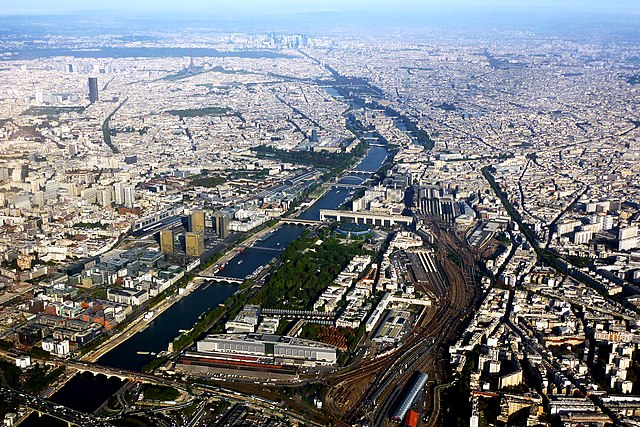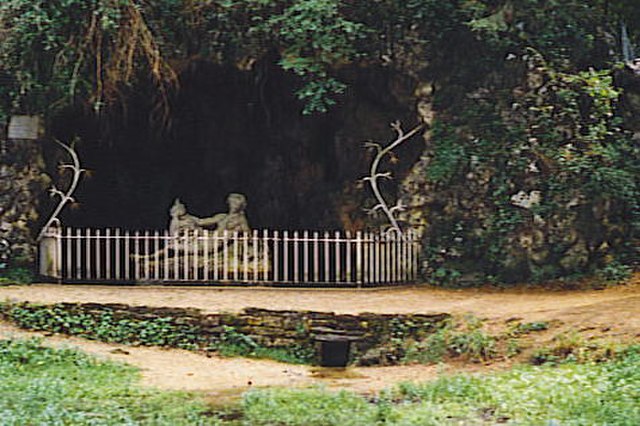The Marne is a river in France, an eastern tributary of the Seine in the area east and southeast of Paris. It is 514 kilometres (319 mi) long. The river gave its name to the departments of Haute-Marne, Marne, Seine-et-Marne, and Val-de-Marne.
The Marne at Dormans, showing aspects of 21st century navigation: grain silos, generating traffic, a hotel barge, and recreational craft
Les Bords de la Marne, 1888 by Paul Cézanne
The Seine is a 777-kilometre-long (483 mi) river in northern France. Its drainage basin is in the Paris Basin covering most of northern France. It rises at Source-Seine, 30 kilometres (19 mi) northwest of Dijon in northeastern France in the Langres plateau, flowing through Paris and into the English Channel at Le Havre. It is navigable by ocean-going vessels as far as Rouen, 120 kilometres (75 mi) from the sea. Over 60 percent of its length, as far as Burgundy, is negotiable by large barges and most tour boats, and nearly its whole length is available for recreational boating; excursion boats offer sightseeing tours of the river banks in the capital city, Paris.
The Seine in Paris
View over the Seine in Paris, Pont des Invalides in the foreground, Eiffel tower in the background
The source of the Seine
The gigantic Cratère de Vix - at 1.64 meters high, the largest bronze vessel of all antiquity, circa 500 BC






